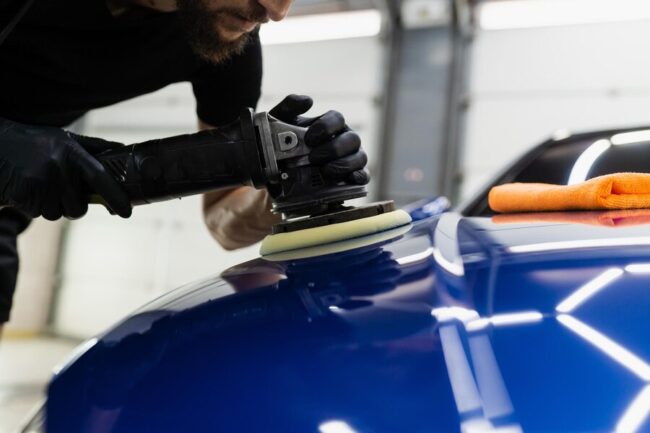In a world where energy efficiency, sustainability, and innovation are paramount, the quest for cutting-edge technologies that can revolutionize industries is constant. One such technology that has been quietly transforming various sectors is reflective coating. Often overlooked yet undeniably powerful, reflective coating technology is critical to enhancing energy efficiency, improving aesthetics, and offering protection in diverse applications.
In this blog series, we will delve deep into the world of reflective coating technology, unraveling its mysteries, exploring its applications, and uncovering the latest advancements. From understanding the science behind reflective coatings to examining their practical applications in architecture, automotive, aerospace, and electronics, we will showcase how this technology is reshaping how we think about energy conservation, design aesthetics, and technological innovation.
Join us as we peel back the layers of reflective coating technology, revealing its potential to transform industries, mitigate environmental impact, and pave the way for a more sustainable future.
Understanding Reflective Coating Technology
Understanding reflective coating technology involves delving into the principles behind its functionality. Reflective coatings, whether metallic or dielectric, are designed to manipulate light waves, allowing specific wavelengths to pass through while reflecting others. This selective reflection enables these coatings to exhibit properties like heat rejection, UV protection, and aesthetic enhancements.
The effectiveness of reflective coatings depends on factors such as the material used, its thickness, and the specific wavelengths targeted for reflection. By understanding these fundamentals, one can appreciate how reflective coatings contribute to various applications, from architectural and automotive to aerospace and electronics, shaping industries and enhancing everyday experiences.
Importance And Applications In Various Industries
Reflective coating technology plays a pivotal role in many industries, offering various benefits that enhance functionality and aesthetics. In architecture and construction, reflective coatings are used in window films to regulate indoor temperatures, reduce energy consumption, and protect against UV radiation. The automotive industry utilizes reflective coatings on windows to improve driver comfort by reducing heat buildup inside vehicles and enhancing privacy.
These coatings are crucial for spacecraft and satellite components in aerospace, providing thermal control and protection against harsh space environments. Reflective coatings also find applications in electronics, which are used in displays to improve visibility in bright conditions and solar panels to increase energy efficiency. This versatile technology continues to evolve, offering innovative solutions across industries for improved performance and sustainability.
Types Of Reflective Coatings
- Metallic Reflective Coatings:
-
-
- Metal Layers: These coatings consist of one or more thin metal layers, such as aluminum or silver, deposited onto a substrate. They are known for their high reflectivity across a broad range of wavelengths.
- Multilayer Metal Coatings: These coatings use multiple layers of different metals to achieve specific reflectivity and spectral characteristics. They can be designed to reflect specific wavelengths of light, making them useful in applications like optical filters and mirrors.
-
- Dielectric Reflective Coatings:
-
- Dielectric Layers: These coatings are made of non-metallic materials, such as silicon dioxide (SiO2) or titanium dioxide (TiO2), deposited as thin layers on a substrate. They are designed to create interference effects that enhance reflectivity.
- Bragg Reflectors: Bragg reflectors are a dielectric coating type consisting of alternating layers of high and low refractive index materials. They are designed to reflect specific wavelengths of light based on the thickness and refractive index of the layers, making them useful in optical devices like laser mirrors and optical filters.
Factors Influencing Reflectivity
- Material Composition: The type of material used in the coating significantly affects its reflectivity. Metals, such as aluminum and silver, are commonly used for their high reflectivity, while dielectric materials like titanium dioxide can also exhibit high reflectance when adequately engineered.
- Coating Thickness: The thickness of the coating layer can impact its reflectivity. Generally, thicker coatings can enhance reflectivity, but there is an optimal thickness for each material beyond which additional thickness may not significantly improve reflectance.
- Surface Smoothness: The smoothness of the surface on which the coating is applied influences reflectivity. A smoother surface reduces the scattering of light, leading to higher reflectivity.
- The angle of Incidence: The angle at which light strikes the coated surface affects reflectivity. For most materials, reflectivity is highest when the angle of incidence is perpendicular to the surface (0° angle).
- Wavelength of Light: The wavelength of the incident light also plays a role. Some materials may exhibit higher reflectivity at specific wavelengths, leading to selective reflection or absorption of certain colours.
- Environmental Factors: Environmental conditions, such as humidity, temperature, and exposure to pollutants, can affect the performance and durability of the coating, potentially impacting its reflectivity over time.
- Substrate Material: The material of the substrate (the surface to which the coating is applied) can influence reflectivity. The substrate’s properties, such as colour, texture, and composition, can interact with the coating to affect overall reflectivity.
Benefits Of Reflective Coating Technology
- Heat Rejection: Reflective coatings can significantly reduce heat transmission through windows and surfaces, improving indoor comfort and energy savings by reducing the need for air conditioning.
- Energy Efficiency: By reducing heat gain, reflective coatings contribute to lower energy consumption for cooling, making them environmentally friendly and cost-effective.
- UV Protection: Many reflective coatings offer UV protection, blocking harmful ultraviolet rays that can cause fading of interior furnishings and skin damage.
- Aesthetic Appeal: Reflective coatings can enhance the appearance of surfaces, providing a sleek, modern look to buildings, vehicles, and electronic displays.
- Privacy: Reflective coatings can also offer privacy benefits by reducing visibility from the outside while maintaining clear visibility from the inside.
- Durability: High-quality reflective coatings are durable and resistant to scratches, ensuring long-lasting performance.
- Versatility: Reflective coatings can be applied to various materials, including glass, metal, and plastics, making them versatile for different applications in architecture, automotive, aerospace, and electronics industries.
Applications Of Reflective Coating Technology
- Architectural: Reflective coatings are used in architectural applications, particularly in window films for buildings. They help regulate indoor temperatures by reducing solar heat gain, which can lead to energy savings in cooling costs. These coatings also provide UV protection, helping to protect interior furnishings and occupants from harmful UV rays.
- Automotive: In the automotive industry, reflective coatings are applied to automotive glass to reduce heat transmission into the vehicle. This helps improve the comfort of passengers and reduces the need for excessive air conditioning, leading to energy savings. Reflective coatings on automotive glass can also enhance privacy by reducing visibility into the vehicle’s interior.
- Aerospace: Reflective coatings play a crucial role in aerospace applications, where they are used on spacecraft and satellites. These coatings help manage thermal control by reflecting or absorbing solar radiation, depending on the mission’s specific requirements. They also protect spacecraft components from the harsh conditions of space, such as extreme temperatures and radiation.
- Electronics: In the electronics industry, reflective coatings are used in displays to improve visibility in bright conditions. By reducing glare and enhancing contrast, these coatings improve the readability of screens, especially in outdoor or high-light environments. Reflective coatings are also used in solar panels to increase energy efficiency by reflecting sunlight onto the solar cells for better absorption.
- Other Industries: Reflective coatings have applications in various other industries, such as lighting, where they are used in reflective surfaces to improve the efficiency of light fixtures. They are also used in mirrors, optical lenses, and other optical components for their reflective properties.
Innovations And Advancements
Innovations and advancements in reflective coating technology are driving significant progress in various industries. One notable development is using nanotechnology to create thinner and more efficient coatings that maintain or even enhance reflectivity while reducing material usage. This approach improves performance and contributes to sustainability by minimizing waste.
Another innovation is the integration of intelligent coatings with sensors and responsive materials, enabling coatings to adapt to changing environmental conditions or user preferences. Additionally, research is ongoing to develop self-healing coatings that can repair minor damage, extending the lifespan of coated surfaces. Furthermore, advancements in manufacturing processes, such as roll-to-roll coating techniques and scalable production methods, make reflective coatings more accessible and cost-effective for widespread applications.
These innovations pave the way for enhanced performance, durability, and versatility in reflective coating technology.
 Challenges And Considerations
Challenges And Considerations
- Environmental Impact and Sustainability: The production and disposal of reflective coatings can have environmental implications, including energy consumption, waste generation, and potential toxicity. Sustainable manufacturing practices and recyclable materials are being explored to mitigate these concerns.
- Maintenance and Durability: Over time, reflective coatings may degrade due to exposure to environmental factors such as UV radiation, moisture, and pollutants. Regular maintenance and proper care are essential to ensure their longevity and effectiveness.
- Cost-effectiveness: The initial cost of installing reflective coatings can be higher than traditional materials. However, these coatings’ long-term energy savings and durability can offset the initial investment. Cost-benefit analyses are essential to assess the overall economic viability.
- Application Challenges: Applying reflective coatings to certain surfaces, especially curved or irregular shapes, can be challenging. Specialized techniques and equipment may be required for precise and uniform application.
- Performance in Extreme Conditions: Reflective coatings must perform consistently under varying environmental conditions, including extreme temperatures, humidity, and chemical exposure. Ensuring durability and performance in such conditions is critical for their effectiveness.
Addressing these challenges requires ongoing research and development efforts to improve reflective coating technology’s sustainability, durability, and cost-effectiveness.
Conclusion
The journey into reflective coating technology has revealed various benefits and applications. From enhancing privacy and security to improving energy efficiency and interior aesthetics, these coatings offer a versatile solution for various needs. Manufacturers have unlocked new possibilities in window tinting and glass treatment by harnessing the power of reflective materials and advanced technologies.
The key to understanding the effectiveness of reflective coatings is their ability to manipulate light and heat. By selectively reflecting and absorbing specific wavelengths, these coatings can control the transmission of infrared and ultraviolet radiation, thereby reducing heat buildup and UV damage. This enhances comfort and protection and contributes to energy savings and environmental sustainability.




